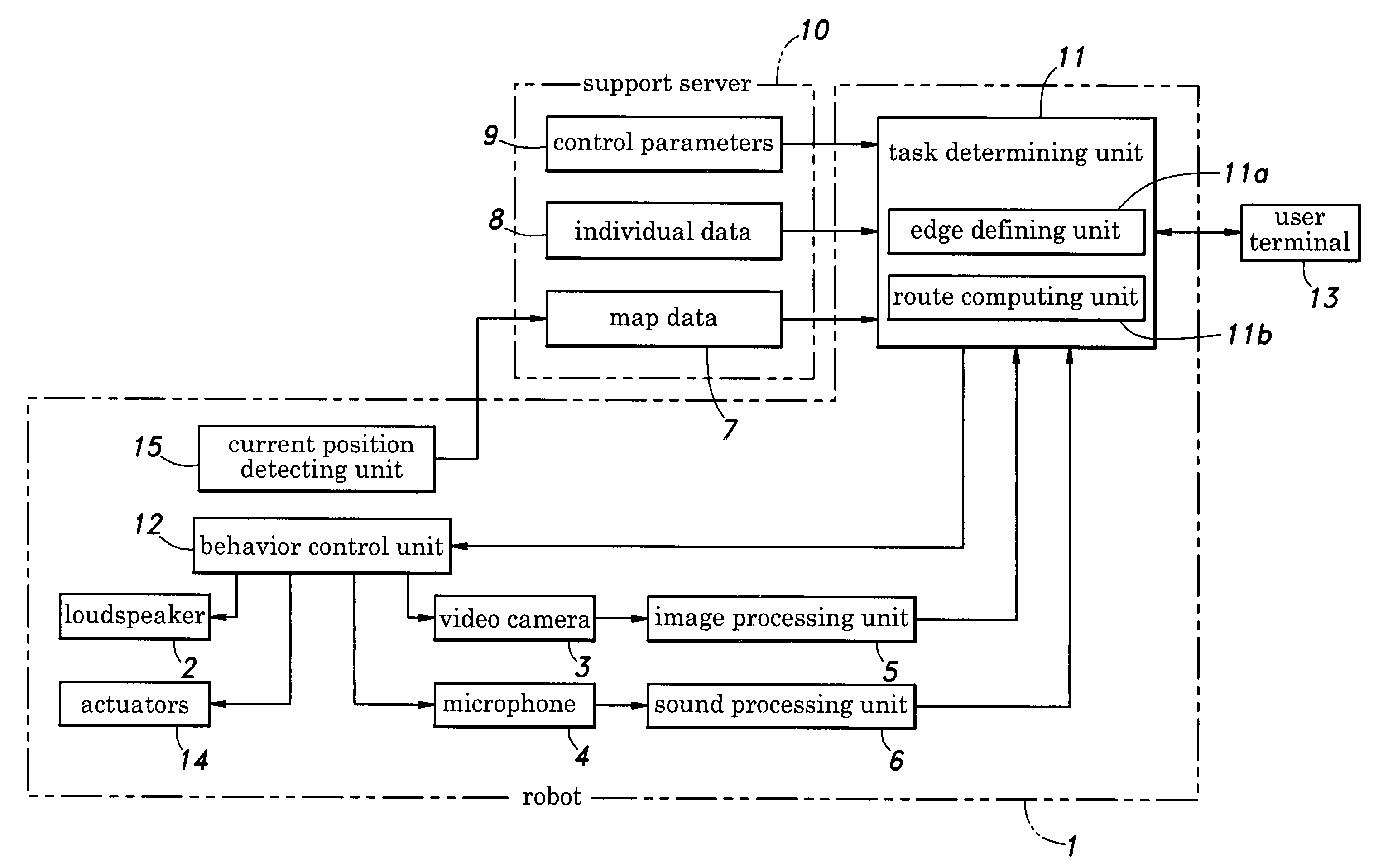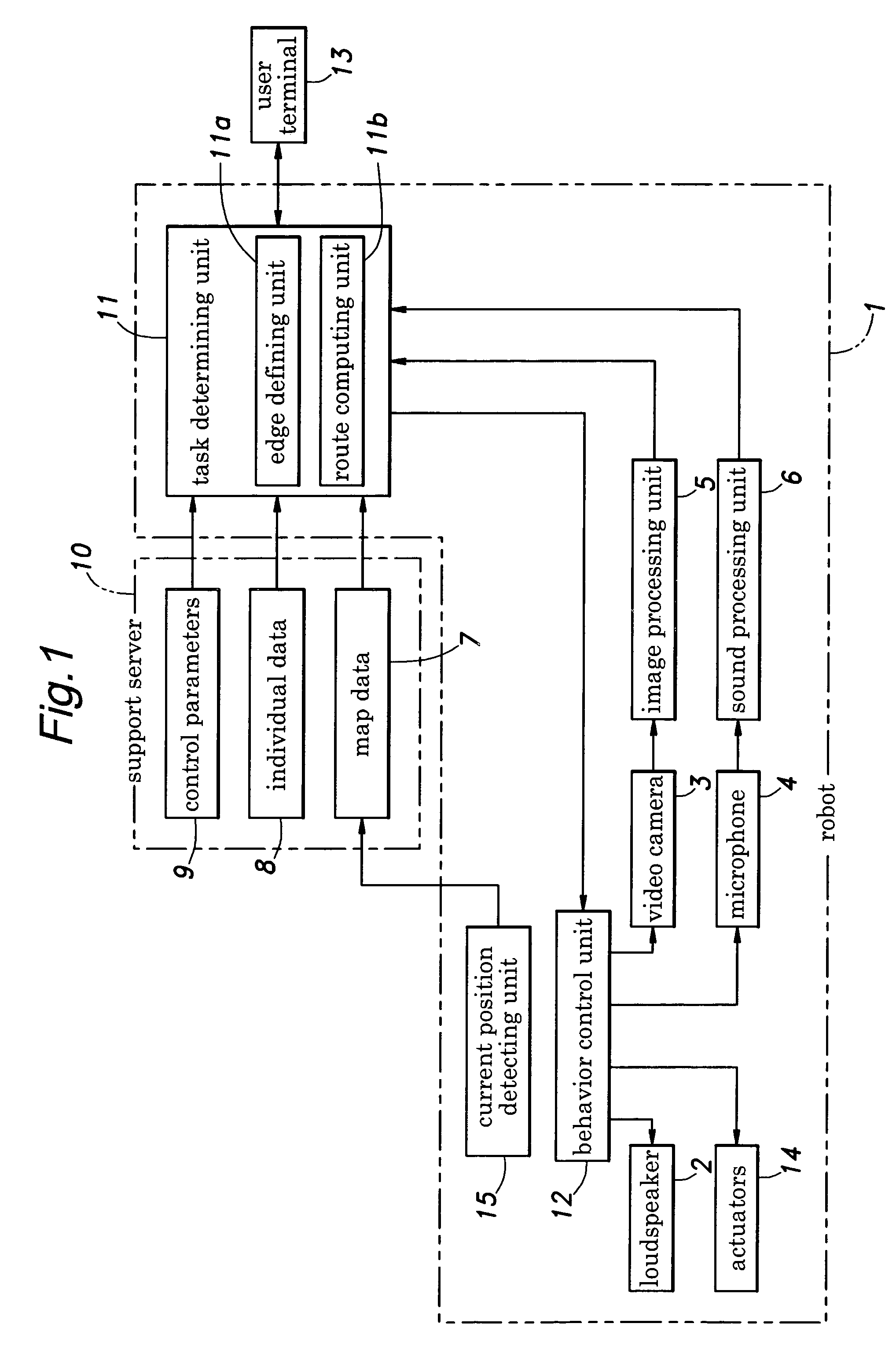Route generating system for an autonomous mobile robot
a technology of autonomous mobile robots and generating systems, which is applied in the direction of process and machine control, distance measurement, instruments, etc., can solve the problems of robots making a clumsy appearance, not easy to design a route for robots, and not the shortest path, so as to reduce computational loads, improve system flexibility, and avoid clumsy appearance in the movement of robots
- Summary
- Abstract
- Description
- Claims
- Application Information
AI Technical Summary
Benefits of technology
Problems solved by technology
Method used
Image
Examples
Embodiment Construction
[0021]FIG. 1 is a block diagram showing the overall structure of an autonomous mobile robot embodying the present invention. The robot 1 is provided with a loudspeaker 2, a video camera unit 3 and a microphone unit 4. The image signal obtained from the video camera unit 3 is forwarded to an image processing unit 5, and the audio signal obtained from the microphone unit 4 is forwarded to a sound processing unit 6. A speech signal generated by a speech synthesis unit is forwarded to the loudspeaker 2.
[0022]The video camera unit 3 comprises a pair of monochromatic or color imaging devices, and can be (laterally) panned and (vertically) tilted by means of an electric motor. The image signal from the video camera unit 3 is digitized by a frame grabber, and movement of an object is detected by comparing a pair of adjacent or separated frames. The two imaging devices provide stereographic information on the distance to the object. The image processing unit 5 performs various image processe...
PUM
 Login to View More
Login to View More Abstract
Description
Claims
Application Information
 Login to View More
Login to View More - R&D
- Intellectual Property
- Life Sciences
- Materials
- Tech Scout
- Unparalleled Data Quality
- Higher Quality Content
- 60% Fewer Hallucinations
Browse by: Latest US Patents, China's latest patents, Technical Efficacy Thesaurus, Application Domain, Technology Topic, Popular Technical Reports.
© 2025 PatSnap. All rights reserved.Legal|Privacy policy|Modern Slavery Act Transparency Statement|Sitemap|About US| Contact US: help@patsnap.com



